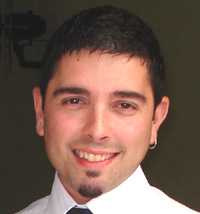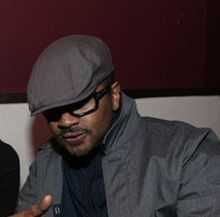Masters of Deception
| Formation | Late 1980s |
|---|---|
| Purpose | Hacking/Phreaking |
| Location | |
Origin | New York |
Founders | Acid Phreak, Scorpion, HAC |
Masters of Deception (MOD) was a New York-based group of hackers, most widely known in media for their exploits of telephone company infrastructure and later prosecution, as well as being the subject of the book Masters of Deception: The Gang That Ruled Cyberspace by Josh Quittner.
Origin of Masters of Deception


MOD's initial membership grew from meetings on Loop-Around Test Lines that led to legendary collaborations to hack RBOC phone switches and the various minicomputers and mainframes used to administer the telephone network. They successfully remained underground using alternative handles to hide even their true hacker identities.
Acid Phreak founded the Masters of Deception with Scorpion and HAC. The name itself was, among other things, a mockery of LOD, as 'M' is one letter up in the alphabet from 'L', although the name originally was a flexible acronym that could be used to identify membership in situations where anonymity would be the best course of action. It could stand for "Millions of Dollars" just as easily as "Masters of Deception."
It is claimed that the mockery of the LOD name was a statement to the underground that LOD had lost its direction. Several LOD members were close friends of MOD who had been raided and indicted by the government, causing the majority of those who remained to drop out of the underground for safety reasons. In their absence, LOD largely fell into disarray causing the disagreement and disillusionment that led Phiber Optik to align himself with MOD in an effort to restore the direction of the spirit of underground hacking.
Members of MOD
The original Masters of Deception included: Mark Abene ("Phiber Optik"), Paul Stira ("Scorpion"), Eli Ladopoulos ("Acid Phreak"), HAC, John Lee ("Corrupt") and Julio Fernandez ("Outlaw").
Additional members whose real names are unknown include: Supernigger (also of DPAK), Wing, Nynex Phreak, Billy_The_Kid, Crazy Eddie, The Plague, ZOD, Seeker, Red Knight (who was also a member of Cult of the Dead Cow), Lord Micro, n00gie and peaboy (a.k.a. MCI Sprinter).
Philosophy
Masters of Deception operated differently in many respects to previous hacking groups. Although they openly shared information with each other, they took a controversial view on sharing information outside the group. It was believed that access to MOD's knowledge should be earned via degrees of initiation and a proven respect for the craft, rather than releasing powerful information into the wild where it could be used for nefarious purposes. A demonstration of responsibility on the part of the initiate was required. This informal compartmentalized protection of more sensitive knowledge was a structure originally employed by LOD in the 1980s, rather successfully. According to Lex Luthor, "I realized early on that only certain people can be trusted with certain information, and certain types of information can be trusted to no one. Giving out useful things to irresponsible people would inevitably lead to whatever thing it was being abused and no longer useful. I was very possessive of my information and frequently withheld things from my articles."—Phrack #40 interview, 1/8/1992.
The Fall of MOD
As a result of a major nationwide investigation by a joint FBI/Secret Service task force, five of MOD's members were indicted in 1992 in federal court. The case was prosecuted by the U.S. Attorney's Office for the Southern District of New York by Assistant U.S. Attorneys Stephen Fishbein and Geoffrey S. Berman.[1] Within the next six months (in 1993), all five pleaded guilty and were sentenced to either probation or prison. After the sentencing of Abene, 2600: The Hacker Quarterly, Winter 1993-94, had on its cover a rag doll labeled "BERMAN" stabbed by a dagger.[2][3]
Media
Masters of Deception have appeared in many magazine and newspaper articles, and the individual members have appeared on television numerous times.
- Village Voice July 24, 1990. Cover Article by Julian Dibbel.
- Singer/songwriter Poe referenced the MOD with the phrase "MOD are you out there?" from her 1995 song "Hello".
- Masters of Deception — The Gang that Ruled Cyberspace (ISBN 0-06-092694-5)
- Gang War in Cyberspace Wired 2.12[4]
- This American Life Nov. 24, 1995. Small Scale Sin Act Three profiles Eli Ladopoulos after his release from prison.[5]
- @Large - The Strangest Case of the World's Biggest Internet Invasion (ISBN 0-684-83558-4)
See also
- Mark Abene, a.k.a. Phiber Optik.
- John Threat, a.k.a. Corrupt.
References
- ↑ Michelle Slatalla and Joshua Quittner, Masters of Deception: The Gang That Ruled Cyberspace, 1995, at page 215
- ↑ Michelle Slatalla and Joshua Quittner, Masters of Deception: The Gang That Ruled Cyberspace, 1995, at page 223
- ↑ http://www.2600.com/covers/wi931.gif 2600: The Hacker Quarterly, Volume Ten, Number Four, Winter 1993-94
- ↑ "2.12: Gang War in Cyberspace". Wired.com. Retrieved 2012-06-15.
- ↑ "Small Scale Sin". This American Life. 1995-11-24. Retrieved 2012-06-15.
- The Book of MOD, Vol. III
- Computer Underground Digest, Volume 5, Issue 87
- Gang War in Cyberspace Wired 2.12
- Notorious M.O.D. Wired 9.06
- Michele Slatalla; Joshua Quittner (10 January 1996). Masters of Deception: The Gang That Ruled Cyberspace. HarperCollins. ISBN 978-0-06-092694-6. Retrieved 14 June 2012.